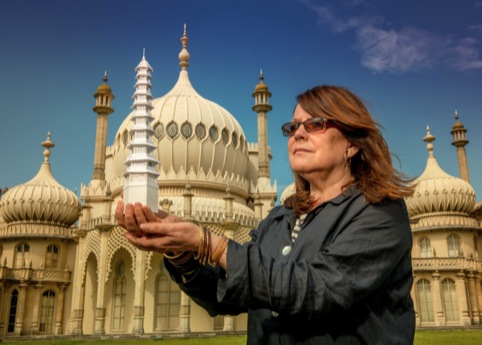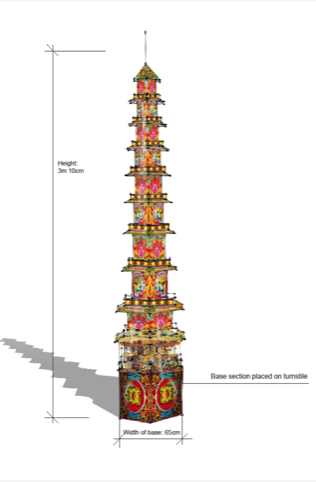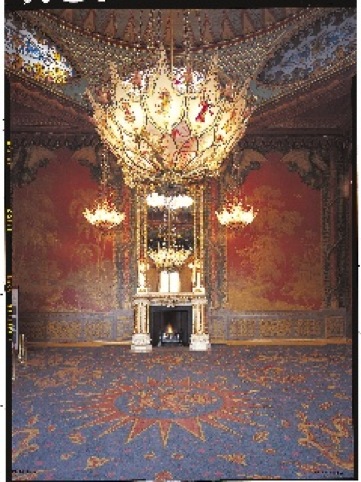Brighton’s Lost Pagodas
The first project in the Pavilion Contemporary series, The Lost Pagodas, is artist Geraldine Pilgrim’s response to the four 18th century porcelain pagodas that used to grace the Music Room of the Prince Regent’s Royal Pavilion in Brighton.
Two of the gilded pagodas remain at the Royal Pavilion, and the other four now form part of the Royal Collection at Buckingham Palace. Temporarily in place till April next year, Pilgrim’s pagodas provide a contemporary take on a lost past.
Pilgrim, whose site-specific work is often characterised by its transformation of forgotten spaces and neglected architecture, expressed the excitements and difficulties of working in a building notorious for its overbearing ornamentation. Pilgrim says, ‘I don’t want to feel that I’ve created something that gets in the way of the building. I wanted to add to the atmosphere rather than to take away – but it can’t be about embellishing or competing with the existing space’.

Her works maintain a simplicity of design, barely playing to the Regency passion for ingenious devices, but allowing a pleasing courtship of light, water, and mirror effects. Although mimicking the structures and scale of the original pagodas, Pilgrim’s designs are scattered throughout the Pavilion, responding to its varying visual stimuli.

The Lace Pagoda on the first floor of the North Gallery is a bamboo-framed pagoda, painted white with a laser-cut lace pattern at each level. It is lit from within, by blue light creating a translucent lace effect and shadow-play.
The Fairground Pagoda introduces you to the playfulness of the Music Room, where the original pagodas were first displayed. Complete with an inbuilt miniature carousel trimmed with traditional fairground lights, the pagoda turns slowly on a revolve to the sound of fairground music.

The Champagne Pagoda in the Great Kitchen is a take on the Regency fountain-style pagoda. Its mirrored sections contain a central fountain pipe, pumping water to pour through the nine layered sections. Budgets permitting, it can only be hoped that at some point this water is turned to wine.

The Chandelier Pagoda in the Long Gallery is built on a brass-wired frame trimmed with crystals. Alternate layers are lit by six chandelier-size bulbs, topped with a 12-armed chandelier.

Although hardly a shell, the Pavilion has a sense of muted seaside grandeur, and can seem like a fantastical white elephant in the contemporary bustle of one of Britain’s most cutting-edge centres of design. Pilgrim says, ‘It’s my role to transform buildings, to bring them back to life – by filling them with an atmosphere or with objects.’ Pavilion Contemporary is an ambitious scheme. This first project, playing to the theatricality and indulgences of the building, is a fitting start, if not quite as radical as later commissions could afford to be.
The notion of Pavilions and Pagodas has a temporary, fleeting feel – these are designs of sudden pleasure, not meant to withstand the duties of time. Experience it while it lasts.
The Lost Pagodas runs from 27 October 2 April 2013 at The Royal Pavilion, Brighton, East Sussex BN1 1EE
-
Post a comment




